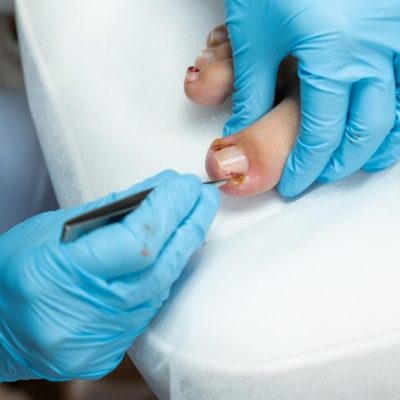Nail Removal Surgery
Nail removal surgery is a common procedure performed to address a variety of nail disorders, such as severe fungal infections, ingrown toenails, nail trauma or painful nail deformities. This surgical intervention involves the partial or complete removal of the affected nail, providing relief from symptoms and preventing further complications. Whether it’s for a persistent infection or a cosmetic concern, nail removal surgery offers a solution when other forms of conservative treatments fail.

What is Nail Removal Surgery?
Nail removal surgery, also known as nail avulsion, is performed when a nail becomes damaged, infected or deformed to a degree that it causes pain or hinders normal activities. The surgery can be partial, where only a portion of the nail is removed, or total, where the entire nail is taken off. It is commonly recommended for conditions such as onychomycosis (fungal infection), severe or recurrent ingrown toenails, chronic inflammation or trauma to the nail bed.
The primary goal of nail removal surgery is to alleviate pain, reduce infection risk, and create an environment conducive to healthy nail regrowth. Depending on the underlying condition, further treatments may be required post-surgery to ensure the nail grows back correctly or to prevent regrowth if deemed necessary.
Method & Treatment of Nail Removal Surgery
Treatment Procedure
Consultation
A thorough consultation is conducted by a qualified dermatologist to assess the condition of the nail and determine the necessity for surgery. The type of nail removal (partial or total) is decided based on the severity of the issue.
Preparation
The surgical area is properly cleaned and sterilized. A local anesthetic is then administered to numb the toe or finger, ensuring a painless experience during surgery.
Nail Removal
- Partial Nail Removal: A portion of the nail and its matrix (the tissue under the nail) is removed, typically in cases of ingrown toenails.
- Total Nail Removal: The entire nail and its matrix are removed, often done in cases of severe infections or deformities. In some cases, a chemical agent like phenol may be applied to prevent regrowth.
Dressing & Aftercare
The wound is dressed with sterile gauze and bandages. Patients are provided with aftercare instructions, including keeping the area clean and dry.
Recovery
Recovery time varies, but patients typically resume normal activities within a few days, with complete healing taking a few weeks.
Post-Treatment Care
After the procedure, patients should follow the recommended aftercare regimen provided by the dermatologist, including regular dressing changes, avoiding unnecessary pressure on the treated area and taking prescribed antibiotics or pain killers as directed.
Applied Areas for Nail Removal Surgery
Nail removal surgery can be performed on:
Toenails
Commonly for severe ingrown toenails, fungal infections, or trauma.
Fingernails
For infections, severe trauma, or other nail disorders that cause significant discomfort or cosmetic concerns.
Precautions and Risks of Nail Removal Surgery
- It is important to disclose any underlying medical conditions you may have, such as diabetes or circulation problems, that may affect healing.
- Inform your dermatologist about any medications or supplements you are taking, especially blood thinners, as they can increase bleeding risk.
- Properly follow the post-surgical care instructions diligently to avoid complications. This includes keeping the area clean and dry and attending follow-up appointments.
- Although rare, there is a risk of infection post-surgery. Proper wound care and hygiene are essential to prevent this.
- Mild bleeding and discomfort are expected but usually manageable with appropriate care.
- In some cases, the new nail may grow back deformed or not at all if the matrix is permanently removed.
- Conditions like diabetes or poor circulation can delay the healing process.
Post-Procedure Signs to Look Out For
Mild Redness and Swelling: It is common to experience some redness and swelling at the surgical site, which should gradually subside.
Pain: Mild to moderate pain is expected initially but can be managed with prescribed painkillers.
Drainage: Clear or slightly bloody drainage from the site is normal in the first few days.
Signs of Infection: Watch for increased redness, warmth, swelling, pus, or fever, which could indicate an infection and require prompt medical attention.
Note: Patients should contact their dermatologist immediately if they notice any signs of infection or if they experience severe pain or bleeding.
Complementary Cosmetic Procedures for Better Outcomes
To enhance the aesthetic outcome or address underlying conditions, nail removal surgery can be paired with the following procedures:
Laser Treatment
For persistent fungal infections, combining nail removal with laser therapy can help eradicate the fungus and prevent recurrence.
Chemical Peels for Hands or Feet
To improve the appearance of the surrounding skin, chemical peels can be used to exfoliate and rejuvenate the area.
Microneedling for Scarring
If nail removal results in scarring, microneedling can help reduce scar appearance and improve skin texture.
Platelet-Rich Plasma (PRP) Therapy
PRP therapy can be used to promote healing and improve the regrowth of healthy nails after removal.
